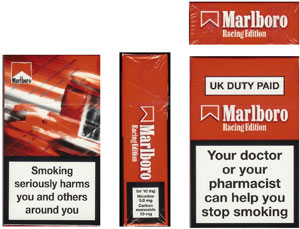JUNE 14, 2006
How to overcome the tobacco ban in F1

Formula 1 is supposed to become a non-tobacco environment at the end of this year, bringing to a close a relationship between F1 and Big Tobacco that dates back to the late 1960s. It has been a very successful symbiotic relationship with tobacco companies getting the coverage they need and the race teams using the money available. As legislation has crowded into F1 the big tobacco companies have been forced to accept that they are at the end of the road with motor racing. Or that is how it looked. Back in 2001 the major tobacco companies agreed that they would stop all tobacco advertising on racing cars at the end of 2006. Ferrari recently announced that it would be continuing its sponsorship arrangements with Philip Morris for years to come and that created a number of questions. But there is nothing illegal in the deal. There is nothing to say that a sponsor has to use the sponsorship it buys on a car to advertise its products. The longtime association with the glamour of F1 does not necessarily have to stop because rather than putting the cigarettes on the side of the car, the tobacco companies have every right to put the racing cars on the side of the cigarettes. The sub-conscious association between Ferrari and Marlboro has been built up over many years and, according to Philip Morris logic, there is no reason to waste that investment. The cars can run without any Marlboro branding but the connection can remain. The answer it seems is the Marlboro Racing Edition cigarette.